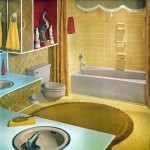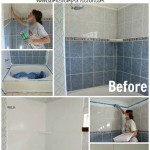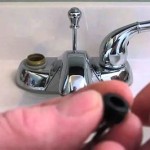RV Bathroom Sink Drain Assembly: A Comprehensive Guide
The bathroom sink drain assembly in a recreational vehicle (RV) is a crucial component of the plumbing system, responsible for efficiently and effectively removing wastewater from the sink. Unlike residential drain assemblies, RV drain assemblies often face unique challenges due to space constraints, vibration during travel, and the risk of freezing in cold climates. Understanding the components, installation, maintenance, and troubleshooting associated with this assembly is vital for any RV owner seeking to maintain a functional and hygienic bathroom.
This article provides a detailed overview of RV bathroom sink drain assemblies, covering their constituent parts, installation procedures, common problems, and preventive measures. The information contained herein aims to equip RV owners with the knowledge necessary to address issues related to their sink drain assemblies, either independently or with the assistance of a qualified plumber.
Key Components of an RV Bathroom Sink Drain Assembly
The RV bathroom sink drain assembly is comprised of several interconnected parts, each serving a specific function in the overall drainage process. These components typically include, but are not limited to:
1. Sink Flange (Drain Basket): This is the uppermost part of the assembly, visibly located inside the sink basin. It is typically made of stainless steel, chrome-plated brass, or plastic, and its primary function is to collect water draining from the sink. The sink flange includes a strainer or slots to prevent larger debris from entering the drainpipe and causing clogs. A rubber or plastic gasket is positioned beneath the flange to create a watertight seal between the sink and the drain assembly.
2. Drain Body: The drain body is the central housing that connects to the sink flange. It extends downwards through the sink drain opening and provides a threaded connection point for the tailpiece. The drain body also often incorporates a mechanism for operating the drain stopper, such as a pivot rod or a pop-up lever.
3. Tailpiece: The tailpiece is a short length of pipe, usually made of plastic or metal, that is connected to the bottom of the drain body. It serves as an extension of the drain body and connects to the P-trap. The tailpiece is typically secured to the drain body with a slip nut and a washer, creating a watertight connection.
4. P-Trap: The P-trap is a U-shaped pipe located beneath the sink. Its primary function is to trap water, which acts as a barrier to prevent sewer gases from entering the RV through the drain. The P-trap is a critical component for maintaining a sanitary and odor-free environment within the RV. It typically connects to the tailpiece via a slip nut and washer.
5. Trap Adapter: The trap adapter connects the P-trap to the drainpipe that leads to the RV's wastewater holding tank. This adapter is frequently a threaded fitting or a slip-joint fitting, depending on the specific plumbing system.
6. Drain Stopper: The drain stopper is a mechanism used to block the drain opening, allowing the sink to be filled with water. RV bathroom sink drain assemblies can utilize various types of drain stoppers, including pop-up stoppers, lift-and-turn stoppers, and rubber stoppers. The choice of stopper often depends on the sink design and the user's preference.
7. Pivot Rod (for Pop-Up Stoppers): Used in conjunction with pop-up stoppers, the pivot rod is a horizontal rod that connects to the drain stopper lever. When the lever is moved, the pivot rod rotates, raising or lowering the drain stopper.
8. Drain Stopper Lever (for Pop-Up Stoppers): This lever, typically located near the faucet, controls the movement of the pivot rod and, consequently, the drain stopper. By manipulating the lever, the user can open or close the drain.
Installation Procedure for an RV Bathroom Sink Drain Assembly
Installing an RV bathroom sink drain assembly typically involves several steps, which must be followed carefully to ensure a proper and leak-free connection. Prior to beginning the installation, gather the necessary tools and materials, including a pipe wrench, channel-lock pliers, plumber's putty or silicone sealant, a screwdriver, and the new drain assembly. Always consult the manufacturer's instructions for the specific drain assembly being installed, as procedures may vary.
1. Removal of the Old Drain Assembly: Begin by disconnecting the water supply lines to the faucet. Place a bucket beneath the sink to catch any remaining water. Loosen the slip nuts connecting the tailpiece to the P-trap and the drain body. Carefully remove the P-trap and tailpiece. Using a wrench, unscrew the drain body from the sink flange. Clean the sink drain opening thoroughly to remove any old putty or sealant.
2. Application of Plumber's Putty or Silicone Sealant: Roll a rope of plumber's putty and apply it to the underside of the sink flange rim. Alternatively, apply a bead of silicone sealant around the underside of the rim. This will create a watertight seal between the flange and the sink.
3. Insertion of the Sink Flange: Insert the sink flange into the drain opening from the top side of the sink. Ensure that the strainer or slots are properly aligned. From underneath the sink, attach the rubber or plastic gasket to the underside of the flange. Secure the drain body to the flange, tightening the connection by hand. Use a wrench to further tighten the connection, but avoid over-tightening, which could damage the sink or the drain assembly.
4. Attachment of the Tailpiece: Slide a slip nut and a washer onto the tailpiece. Insert the tailpiece into the bottom of the drain body and tighten the slip nut by hand. Use a wrench to further tighten the connection, ensuring a secure and watertight seal.
5. Installation of the P-Trap: Connect the P-trap to the tailpiece using a slip nut and a washer. Tighten the slip nut by hand and then use a wrench to further tighten the connection. Ensure that the P-trap is properly aligned and that it holds water to create a barrier against sewer gases.
6. Connection of the Trap Adapter: Connect the trap adapter to the outlet of the P-trap and to the drainpipe leading to the RV's wastewater holding tank. Ensure that the connection is secure and watertight.
7. Installation of the Drain Stopper Mechanism: If the drain assembly includes a pop-up stopper, install the pivot rod and drain stopper lever according to the manufacturer's instructions. Ensure that the stopper operates smoothly and effectively blocks the drain opening.
8. Testing for Leaks: After completing the installation, turn on the water supply and fill the sink with water. Check for any leaks around the sink flange, tailpiece, P-trap, and trap adapter. If leaks are detected, tighten the connections further or disassemble the assembly and reapply plumber's putty or silicone sealant.
Common Problems and Troubleshooting
RV bathroom sink drain assemblies are susceptible to various problems, including leaks, clogs, and malfunctioning drain stoppers. Addressing these issues promptly is essential to prevent water damage and maintain a functional plumbing system.
1. Leaks: Leaks in an RV bathroom sink drain assembly can occur at various points, including the sink flange, tailpiece connection, P-trap connection, and trap adapter connection. The primary cause of leaks is often loose connections or deteriorated seals. To address leaks, first identify the source of the leak. Tighten any loose slip nuts or threaded connections. If the leak persists, disassemble the connection and inspect the washers and gaskets for damage. Replace any damaged components and reapply plumber's putty or silicone sealant to ensure a watertight seal.
2. Clogs: Clogs are a common problem in RV bathroom sink drains, often caused by hair, soap scum, and other debris accumulating in the drainpipe. To clear a clog, first try using a plunger. If the plunger is ineffective, disassemble the P-trap and clean out any accumulated debris. A plumber's snake can also be used to dislodge clogs further down the drainpipe. Avoid using harsh chemical drain cleaners, as they can damage the plastic pipes commonly used in RV plumbing systems. A mixture of baking soda and vinegar can sometimes be effective in dissolving minor clogs.
3. Malfunctioning Drain Stopper: A malfunctioning drain stopper may fail to seal the drain opening properly or may become stuck in the open or closed position. For pop-up stoppers, the pivot rod may be misaligned or corroded. Adjust the pivot rod to ensure proper alignment. Lubricate the pivot rod with silicone grease to facilitate smooth operation. If the stopper is stuck, try gently wiggling it or using a small tool to dislodge any debris that may be preventing it from moving freely. For other types of stoppers, such as lift-and-turn stoppers, inspect the stopper mechanism for damage or wear and replace any worn parts.
Preventive Maintenance for RV Bathroom Sink Drain Assemblies
Regular preventive maintenance can significantly extend the lifespan of an RV bathroom sink drain assembly and minimize the likelihood of encountering problems. Key preventive measures include:
1. Regular Cleaning: Flush the drain with hot water regularly to prevent the buildup of soap scum and other debris. Use a strainer in the sink to catch hair and other large particles before they enter the drainpipe.
2. Inspection for Leaks: Periodically inspect the drain assembly for leaks. Tighten any loose connections and replace any damaged washers or gaskets promptly.
3. Winterization: In cold climates, winterize the RV's plumbing system to prevent freezing and damage to the drain assembly. This typically involves draining all water from the pipes and adding antifreeze to the plumbing system.
4. Avoid Harsh Chemicals: Avoid using harsh chemical drain cleaners, as they can damage the plastic pipes and seals in the drain assembly. Opt for gentler cleaning methods, such as using a plunger or a plumber's snake.
5. Proper Storage: When the RV is not in use, ensure that the drain stoppers are in the open position to allow for proper ventilation and to prevent the buildup of moisture.
By implementing these preventive measures, RV owners can ensure the longevity and proper functioning of their bathroom sink drain assemblies, minimizing the need for costly repairs and maintaining a hygienic and comfortable living environment within their recreational vehicles.

Chrome Rv Mobile Home Bathroom Faucet Drain No Overflow

Oil Rubbed Broe Rv Mobile Home Bathroom Faucet Drain With Overflow

Brushed Nickel Rv Mobile Home Bathroom Faucet Drain No Overflow

Highcraft Flat Stainless Steel Rv Mobile Shower Strainer Drain Assembly For Bar Or Bathroom Sinks Com

20 Bathroom Sink Drain Parts How They Works Stopper Plumbing

How To Squeeze More Space Out Of A Tiny Rv Bathroom Artofrv Com

Rv Bathroom Sink Replacement

Road Home Polished Chrome Vanity Sink Drain Assembly Rvp074 The Depot

Yasinu Bathroom Pop Up Drain Assembly Vessel Sink Stopper With Overflow In Matte Black Ynb007a02mb The Home Depot

10 Easy Diy Rv Bathroom Renovation Ideas Love
Related Posts







